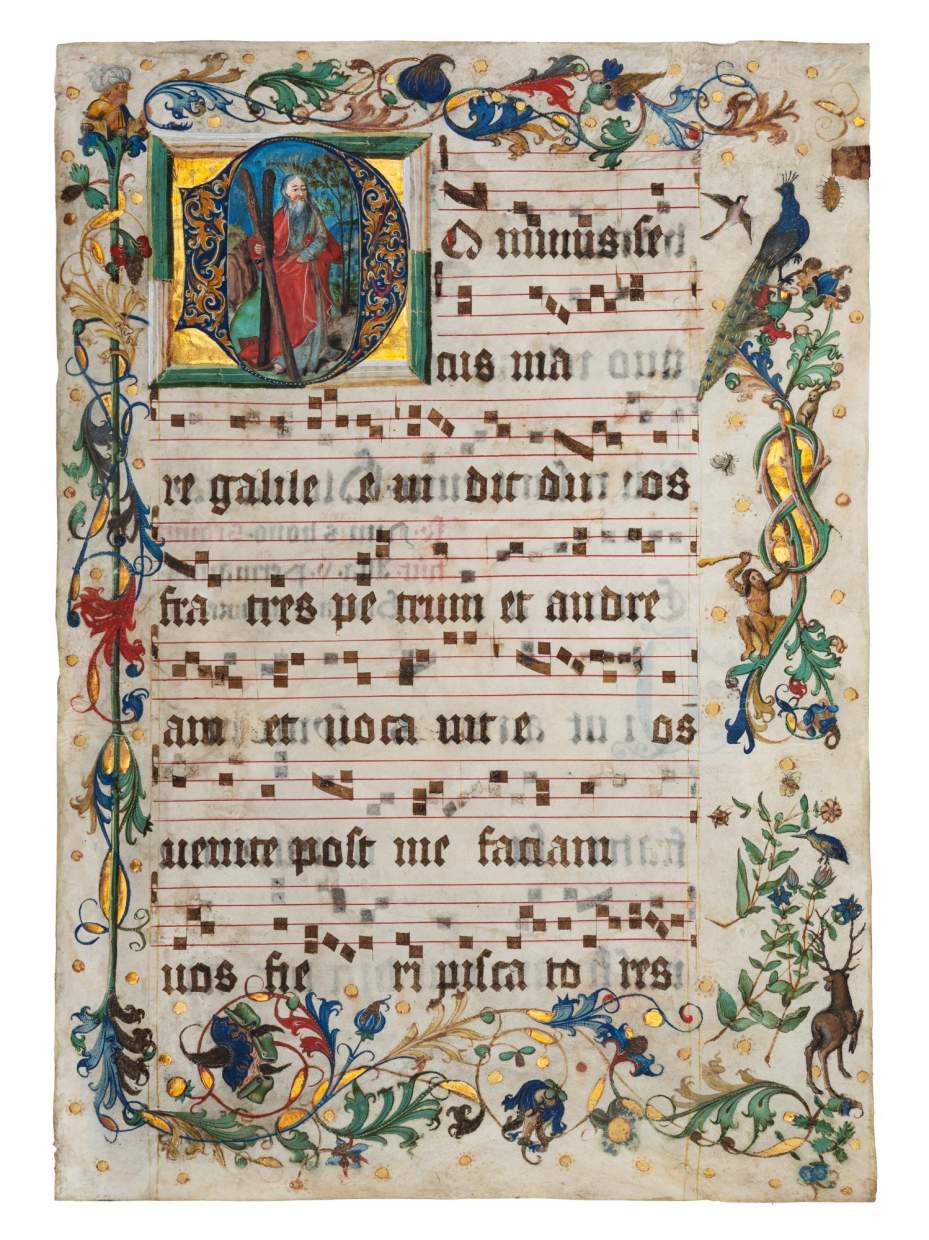

St. Andrew, in a historiated initial D, on vellum from an Antiphonal, illuminated by the Leonhard Beck workshop. Germany, Augsburg, c. 1500.
Leaves: 595 x 419 mm, miniature: 140 x 140. Tem- pera and gold on vellum.
Provenance: Germany, private collection.

Against a golden background, Saint Andrew is depicted as an old man, with long grey hair and beard. The apostle stands with his “X” shaped, diagonal cross before a blue sky and a wide landscape. He is dressed in a bright red cloak, which he holds together with his right hand. The heavily foreshortened cross demonstrates the painter’s vivid interest in spatiality.
Both the style of the illumination and the ornamental repertoire used in its beautiful margin point to the artistic milieu of Augsburg. Most precisely, this leaf can be attributed to the circle of Leonhard Beck (1480-1542), documented as a panel painter, illuminator, and draughtsman and son of the renowned painter Georg Beck. For example, the man on a turban emerging from a flower in the top-left corner or the majestic peacock balancing gracefully on top of a fancy plant are elements typically found in the repertoire of the Beck family workshop. Also, the curling tendrils of fantastical plants in strong vivid colours and fan-like acanthus leaves are characteristic of the Augsburg manuscript illumination of the time.
Probably coming from an Antiphonary, this large and highly decorated leaf introduces the mass of Saint Andrew. That text, sung on the 30 of November, opened the sequence of the chants in the parent manuscript and received a particularly careful ornamentation. This explains why our musical leaf presents a border that trails in the four margins of the folio, filled to the brim with a wide variety of wildlife.



